Day out at the gallows and other bygone photographic oddities
- Published
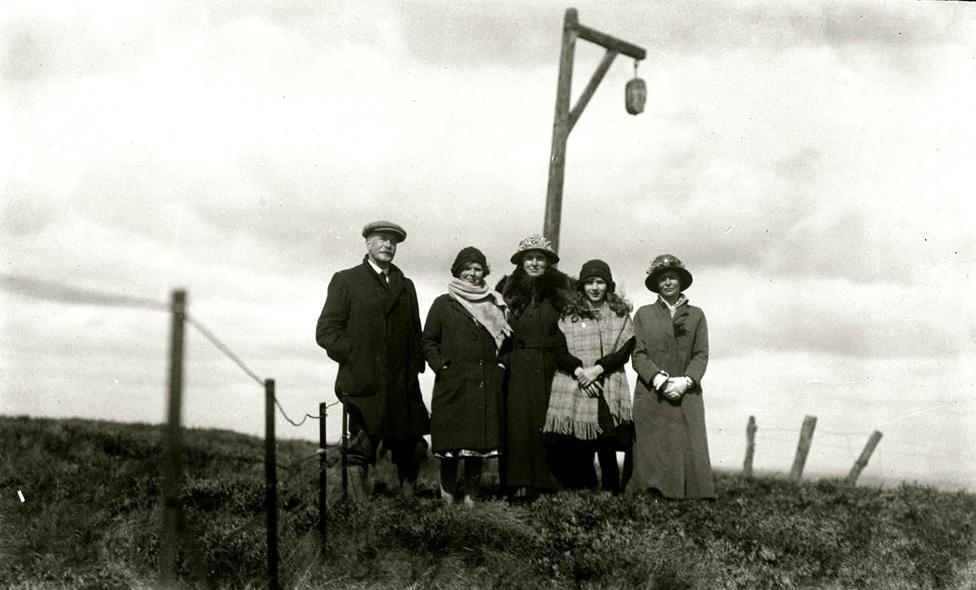
Lined up for a family photograph, Victorians often looked grim and staid - people from another era. But curator Chris Wild offers a fascinating snapshot of family life that reveals the Victorians and Edwardians were often more modern than we think.
Chris Wild - otherwise known as the Retronaut, external - has spent the past year mining the photographic collection of the Woodhorn Museum and Northumberland Archives, external. This fascinating treasure trove - which will be exhibited from 27 September - is designed to change our perception of the past. Here Wild picks some of his favourite images featuring characters mostly born in the Victorian era.
Those of us who are not Northumbrian natives may be taken aback to learn that Winter's Gibbet, on Steng Cross, in Elsdon, Northumberland, remains a popular venue for a day's excursion. Named after one William Winter, hanged at Newcastle's Westgate in 1792 for murder and whose body was subsequently displayed as a warning to all Steng Cross, the current gibbet is the latest in a long line of wooden replacements. What is perhaps most surprising to us about this picture (top of the page) is the seeming formality of the group's clothes. It is a cold day - but not that cold, given that the group is wearing hats and scarves, but not gloves. And this is a family group - there are resemblances to be seen. What has brought them together? What were they commemorating in this photograph, under the wooden head of William Winter?
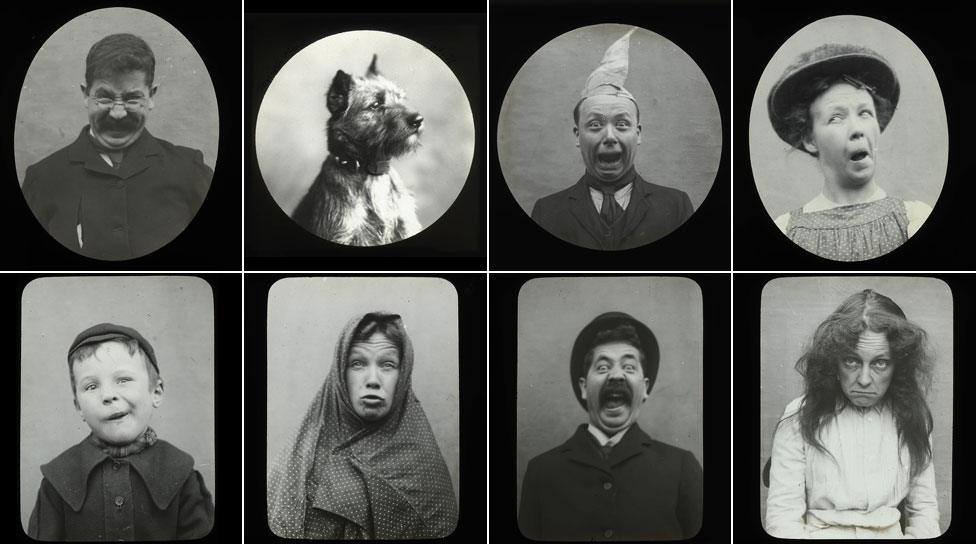
Nothing is known for certain about this set of beguiling portraits (above) - they have no supporting text or provenance or description of any kind. In my view, none is required. What we can say for certain is that here are our ancestors clowning around, more than 100 years ago. This is very rare for Victorian and Edwardian photographs. Why? Because even though exposure times had rapidly decreased across the 19th Century, photography was still an activity primarily practised by photographers rather than everyone. This was to change, and the introduction of Kodak's Box Brownie camera in 1900 facilitated that change and made the snapshot possible. Still, for many people, having one's photograph taken was a rare event before 1914.
Perhaps these images were test shots for a professional photographer. Whatever the case, as outliers to photographic history, they tear a hole in our map of the past, a hole in which we see our predecessors as charmingly human. For an added bonus, one of the pictures is of a hound.
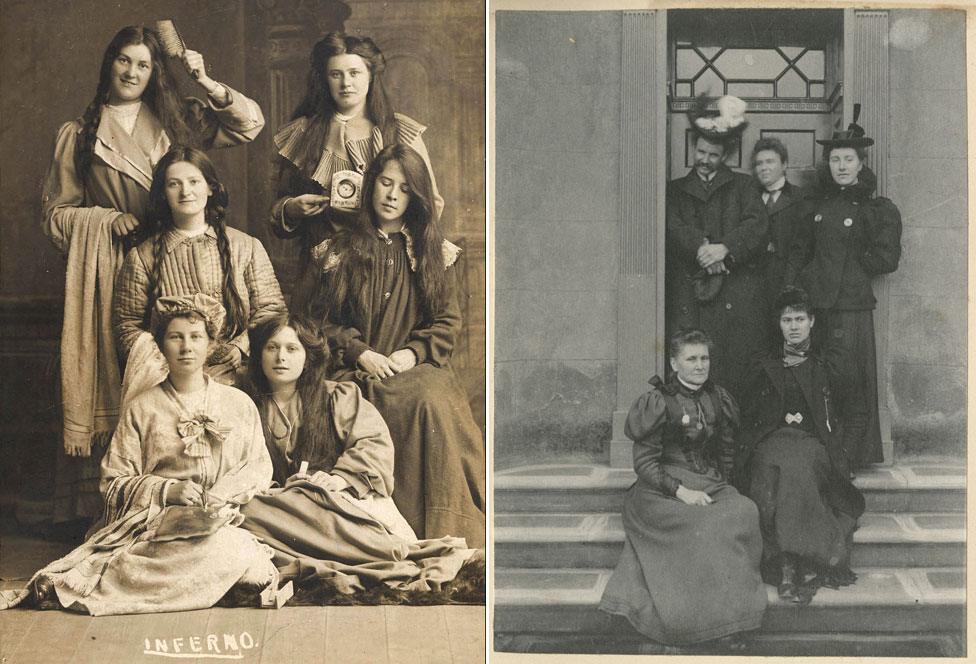
There are two fascinating elements to this photograph labelled Inferno. The first is that it has been given - and there is no clue whatsoever as to why this is the case - that title. Were these young women performing a play based on the works of Dante? There is possibly a hint of the medieval about their clothes, though actually they look more as though they are preparing to go to bed - one is brushing her hair, one holds a clock and all may well be wearing nightgowns. There is no obvious hell to be seen. But most intriguing of all is the face of the woman on the right of the middle row.
The other girls look directly at the photographer, each with a faint but real smile, delighted to be captured in costume. But she has missed her cue, she looks down at the ground, almost veiled by her hair, her right hand tightly holding her left. Is she shy, or is she troubled? Neither - or both? We will never know, but she remains a disconcertingly modern face in an antique crowd. Perhaps this is the inferno.
In the second picture, whose hat is the man wearing? The woman on his left smiles, on the edge of embarrassment - she is aware of the hat. The older woman in front is not, nor the woman to her left. It's fair to say that he seems to find his joke especially amusing - more so than any other member of the group. Has he done this sort of thing before? Does he do it too often, finding himself too funny? Is there a tension in the group? A tension that he hopes to hide and succeeds only in highlighting?

It is Friday, 28 May 1926, and the staff of Stannington Sanitorium near Morpeth have scrubbed this ward to within an inch of its life. The beneficiary of this frenzied activity is the Duke of York, who just over 10 years later would become King George VI. The doors and windows on the left side, which led on to a veranda, are thrown open, and all the doors, and the windows on the right and the beams, are covered with garlands. Those children who are well enough to sit up have sat up - many are not able to or are not well enough. But it is the sign "Happiness" that dominates this picture. Was this sign there when the duke wasn't visiting? Did it function as a soothing description, or an emphatic request? In either case, it still gives its message to us today.
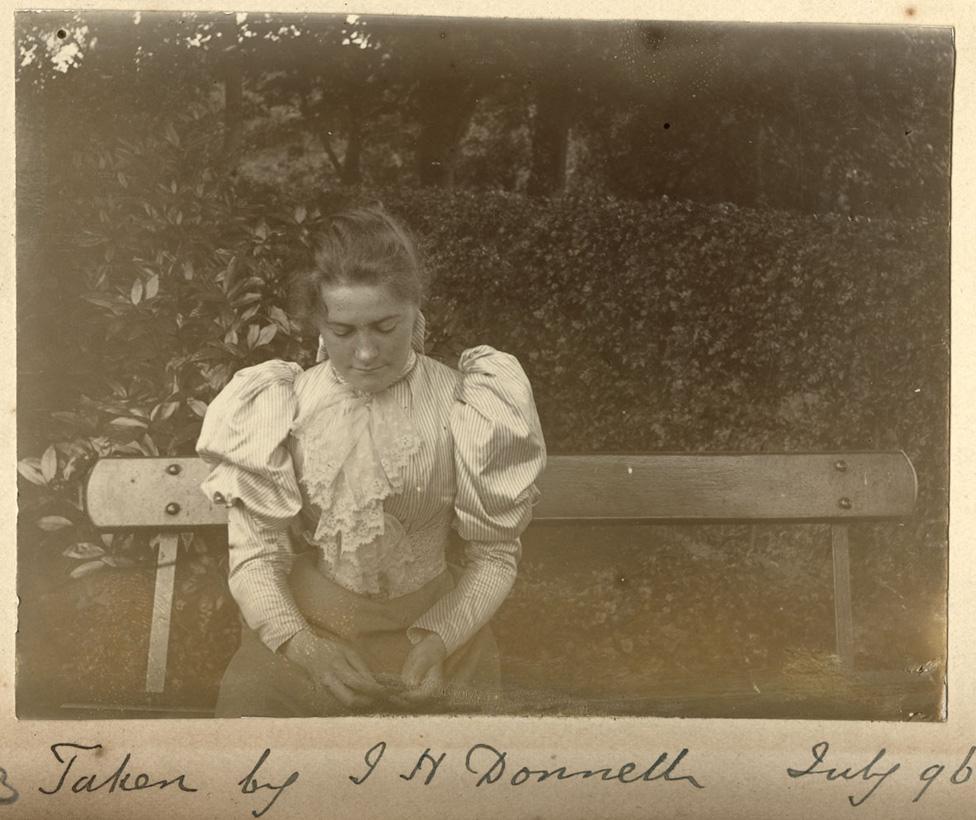
Whether it was a warm or a cool day in July, July it was when this picture was taken in 1896. It may be that the discomfort of mutton-leg sleeves and a tight collar in July are enough to account for an apparent refusal to look at the camera. This is not what we expect of Victorians, and judging by the rarity of this kind of picture, it is not what they expected of themselves. The woman is holding and looking at an object - is she using that as an excuse not to look directly at the camera of J H Donnell? Donnell wanted it to be known most emphatically that he or she took this picture, as if to cement the relationship between photographer and subject. It worked - 118 years later the relationship persists in this image.
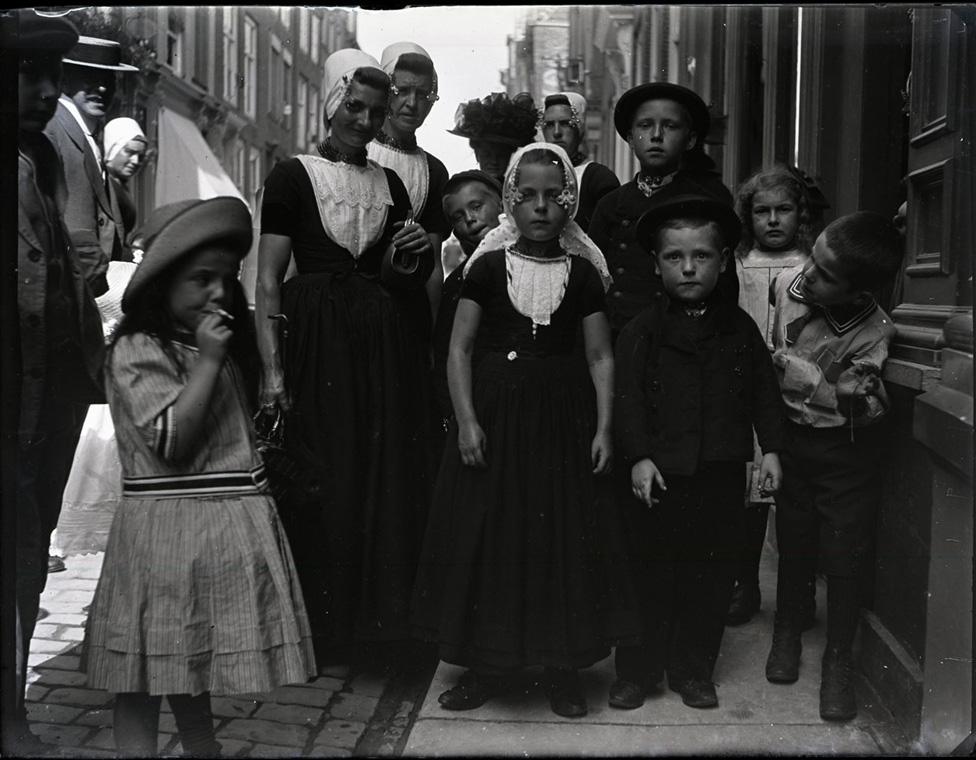
This pair of pictures was taken by a Northumbrian photographer in the Low Countries. The costumes the girls are wearing are not worn for the benefit of the camera - this is the typical dress for women of the Netherlands 100 years ago. It is the end of the age when national dress was genuinely typical national dress, rather than the clothes of a souvenir doll at an airport. Certainly there is not a trace of self-consciousness in the expressions of the women. A second remarkable characteristic of these two pictures is their intense detail. The map of time that we each possess becomes fainter the further back we look. Our map takes on the nature of the old pictures - we see the past itself as vague, clouded, sepia, dusty - something qualitatively quite different to now. But as these pictures demonstrate, the past was/is - as crisp, as sharp, as high resolution as our own version of "now". "We are entirely real," say the subjects. One final thought - is the little girl on the left in the top picture smoking? (Although, it has been suggested, she could simply be enjoying a traditional "stroopsoldaatje" - a paper cone filled with syrup.)
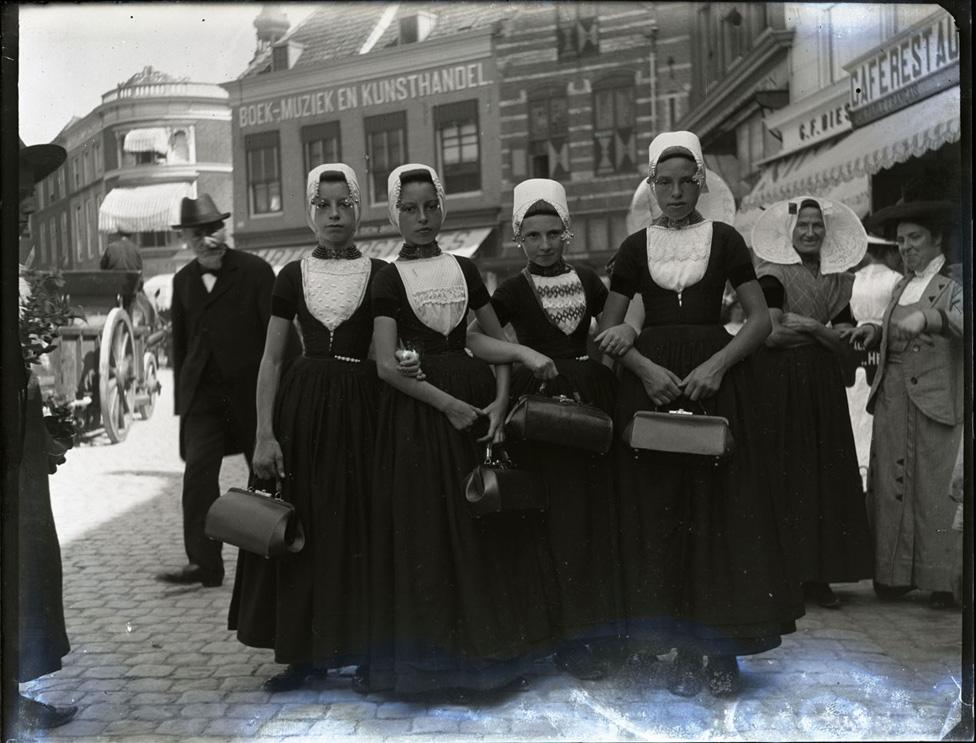
All pictures supplied by the Woodhorn Museum and Northumberland Archives. The exhibition, external runs from 27 September to 22 February 2015.
You can follow the Magazine on Twitter, external and on Facebook